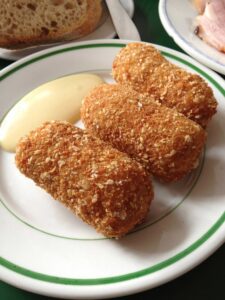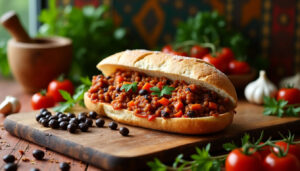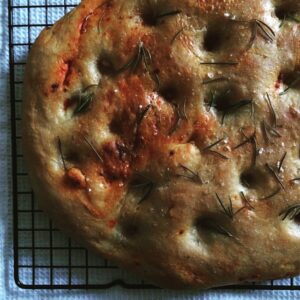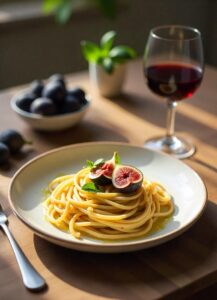Chinese Christmas Feast: Discover the Traditional Cuisine and Unique Dishes You Need to Try This Holiday Season! 🥢
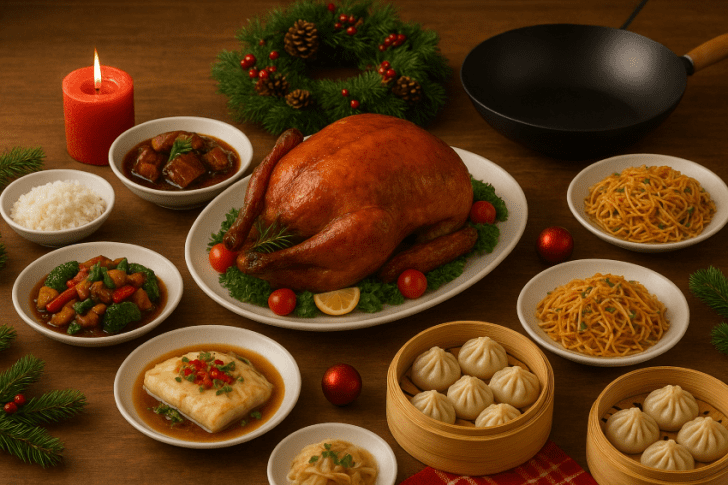
Why Chinese Food is the Real Christmas Dinner: Breaking Down the Festive Feast Traditions
If you’re reading this outside of China, the phrase “Chinese Christmas Cuisine” likely conjures up images of a classic American-Chinese takeout feast—a tradition rooted in New York City’s Jewish and Chinese immigrant history, where Chinese restaurants were famously the only places open on Christmas Day. But what does the holiday table actually look like in Beijing, Shanghai, or Guangzhou? The answer is a fascinating blend of ancient cultural reverence for prosperity and a modern, commercial flair!
Chinese Christmas is not a public holiday in mainland China; it is primarily a secular, youthful, and commercial celebration often treated like a second Valentine’s Day but also celebrated on the 25th of December. Yet, this relatively recent embrace of the festive season has quickly developed unique food traditions and regional specialties that center on themes of peace, longevity, and good fortune—themes that underpin all major Chinese celebrations.
From the now-famous custom of gifting “Peace Apples” (Píng’ān Guǒ) on Christmas Eve to the grand, family-style feasts that prioritize whole, symbolic dishes like Roast Duck and Steamed Fish over a Western turkey, the Chinese approach to the holiday table is rich with meaning. This article will dive deep into the real food traditions of a Chinese Christmas, exploring the history, the homophones (wordplay), and the incredibly unique dishes that define the most delicious winter festival of the year.
🍽️ Beyond Takeout: Why Christmas in China Isn’t What You Think
For most of us here, Christmas is less about a religious holiday and more about a joyful winter festival—a fantastic excuse to gather and cook an incredible, abundance-themed dinner. It’s an evening where family and good friends get together before the main event: the Lunar New Year.
The Western Influence: Apples and Christmas Eve
The most visible Chinese Christmas tradition is the apple. We call Christmas Eve Píng’ān Yè (Peaceful Night), and the word for apple, píng guǒ, is a perfect homophone for peace. So, on Christmas Eve, we exchange Peace Apples (Píng’ān Guǒ), often beautifully wrapped or decorated. It’s a modern, commercial trend, but it instantly gives the evening a sweet, uniquely Chinese flavor. This is why you see so many people eating an apple on December 24th—it’s a symbol of peace and goodwill for the year ahead.
The Real Feast: Adopting New Year Symbols for a Winter Celebration
Since Christmas is a newer holiday for us, our festive menu borrows heavily from the time-honored dishes of the Lunar New Year (Chūnxī or Spring Festival). The focus is entirely on symbolic Chinese dishes for prosperity and abundance. You can’t just pick any dish; every item has a specific wish attached to it.
🥢 The Culinary Stars: Abundance and Longevity on the Festive Table
As a local who loves a good festive gathering, let me tell you that the true magic of a traditional Chinese holiday feast isn’t about one big bird. It’s about symbolism, abundance, and the ancient techniques that make every dish a wish for a prosperous new year.
The Star Ingredients and Symbolism
| Dish | Main Ingredients/Products | Symbolism | Local Importance |
| Whole Steamed Fish (Qīng Zhēng Yú) | Live-caught White Fish (Sea Bass, Carp), Ginger, Scallions, Soy Sauce, Shaoxing Wine. | Surplus and Prosperity (Yú, fish, sounds like the word for ‘surplus’). | Absolutely essential. The fish must be served whole (head to tail) to ensure a good start and finish to the year. |
| Dumplings (Jiǎozi) | Ground Pork/Shrimp, Chinese Cabbage, Wheat Flour for wrappers, Chives. | Wealth and Fortune (Shaped like ancient gold ingots). | A communal ritual. We often wrap these together as a family on Christmas Eve (Ping’an Ye) or the eve of Lunar New Year. |
| Longevity Noodles (Chángshòu Miàn) | Wheat Noodles (often hand-pulled), Seasonal Vegetables, Lean Meat (Pork/Chicken). | Long Life and Health. | The noodles must be eaten without breaking them to avoid cutting your life short! |
| Roast Meats (Duck/Goose) | Whole Duck or Goose, Five-Spice Powder, Honey, Soy Sauce. | Good Fortune and Completeness (A whole bird symbolizes family unity). | Often replaces the Western turkey, especially Peking Duck for a luxurious Northern feast. |
The Centerpiece: Roasts and Whole Birds for Prosperity
The star of any celebratory table is a whole roast bird. In the North, it might be the famed Peking Duck. In the South, a crisp-skinned Roast Goose or a Soy Sauce Chicken is more common.
- Symbolism: Serving a whole bird (head and tail intact) is absolutely non-negotiable. It signifies completeness, unity, and a good start-to-finish for the coming year. It replaces the Western turkey as the main spectacle, often beautifully lacquered with honey and spices.
Longevity and Abundance: Symbolic Ingredients
- Whole Steamed Fish (Qīng Zhēng Yú): This is the single most important dish for abundance. The Mandarin word for fish, yú, sounds exactly like the word for “surplus” or “extra.” Therefore, eating Whole Steamed Fish is an active wish for a surplus of wealth and good fortune. Just like the bird, it must be served whole—head and tail—to ensure completeness.
- Dumplings (Jiǎozi): Making and eating Jiǎozi is a communal, high-engagement activity. We spend the evening wrapping them because their shape resembles ancient Chinese gold ingots (sycee). Every dumpling you eat is a piece of gold, and thus, a wish for great wealth! Families even hide a coin in one dumpling for extra good luck.
- Long Life Noodles (Chángshòu Miàn): These are essential for any birthday or longevity celebration. On a festive night, these long, uncut noodles are a simple, clear wish for a long, healthy life. Remember: never cut the noodles, or you cut the blessing short!
🔪 The Tools and Production Steps for an Authentic Chinese Feast
A traditional Chinese holiday feast is more than a menu; it’s a commitment to technique. To truly honor these dishes, you need the right authentic Chinese cooking tools for festive meals and a respect for the preparation process.
Key Tools and Why We Use Them
- The Wok (Guō): Forget your frying pan. The Wok is the heart of our cuisine. Its curved shape allows for rapid, precise temperature control, essential for achieving Wok Hei (the elusive “breath of the wok,” a smoky aroma) in our stir-fries. It’s also used for deep-frying the duck skin or quickly searing ingredients.
- The Cleaver (Cài Dāo): This single, heavy knife is the only tool we need. It’s used for chopping, slicing, mincing, and even crushing aromatics. Its flat side is perfect for scooping mountains of chopped vegetables or meat filling for the dumplings.
- Bamboo Steamer (Zhēng Lóng): Crucial for the Whole Steamed Fish and dumplings. The bamboo naturally absorbs steam condensation, preventing water from dripping back onto the food, ensuring the fish skin and dumplings stay perfectly clean and tender.
The Importance of Process: The Sizzling Final Step
We don’t rush the process; the ritual is the flavor.
- Dumpling Assembly: The production step for Jiǎozi is a mandatory, communal event. The whole family sits and folds, laughing and chatting. This togetherness is the real secret ingredient.
- Precision Steaming: For the Steamed Fish, the process is a quick, high-heat burst (about 8 minutes) to keep the flesh delicate. The most vital step is the very end: we finish the fish by drizzling sizzling hot, smoking oil over a pile of fresh ginger and scallions right on the plate. You must hear the sizzle; this flash-frying “wakes up” the aromatics and creates the signature aroma and flavor of a perfectly cooked fish.
🌟 The True Spirit
So, next time you think of “Chinese Christmas food,” look beyond the takeout box. The authentic Chinese Christmas cuisine traditions are an eloquent, delicious expression of filial piety and hope. Every plate of Whole Steamed Fish is a wish for a financial surplus; every tray of Dumplings is a handful of gold. This cuisine is not just dinner—it is a culinary prayer for luck, longevity, and family unity. To skip any traditional step—to break the noodles, to serve only half a fish, or to buy pre-made dumplings—is to sacrifice a part of the blessing! This holiday season, whether you’re wrapping Jiǎozi with your family or sharing a Peking Duck for prosperity, remember that the ingredients, the tools, and the ritual steps are the real gift. If you travel to China or cook your dish at your home comfort, dare to try the traditional way and taste the good fortune yourself!
🎉 What’s your family’s favorite lucky Chinese dish? Share the tradition and recipe in the comments below!

